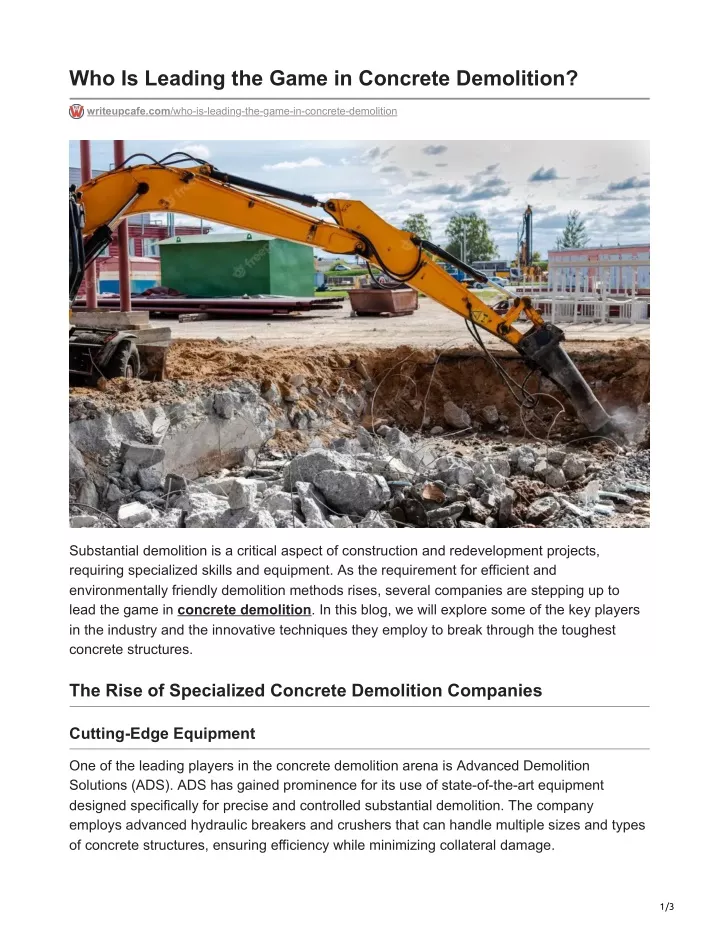Your Best Overview for Picking a Demolition Contractor
Wiki Article
Convenient Land Cleaning Options for Your Property Requirements
When considering the advancement or maintenance of a home, the process of land clearing plays a vital function in preparing the ground for agriculture, building, or landscape design purposes. With a series of methods readily available, each offering its very own set of factors to consider and benefits, choosing one of the most ideal strategy can be an intricate choice. From standard hands-on techniques to innovative mechanical solutions and eco aware methods, homeowner are confronted with numerous alternatives to browse. Comprehending the nuances of each method and its effects on both the instant surroundings and the more comprehensive ecological community is important for making informed choices that align with the residential or commercial property's values and needs.Traditional Cleaning Techniques
Typical clearing methods include using guidebook devices, such as machetes, power saws, and axes, to remove plant life and debris from the land. These approaches have actually been employed for centuries and are still commonly utilized today as a result of their effectiveness in small clearing projects. Axes are versatile tools that can be used to chop down tiny trees and hedges, while machetes are perfect for puncturing thick underbrush and vines. Chainsaws, on the other hand, are effective devices that can quickly fell huge trees and clear substantial areas of land.While standard clearing up techniques can be time-consuming and labor-intensive, they use an economical solution for property owners wanting to clear little to medium-sized areas. In addition, hand-operated devices provide more accuracy and control, enabling employees to uniquely clear vegetation without causing unnecessary damage to the surrounding atmosphere. Generally, standard clearing up methods remain a preferred choice for many people looking for to clear land for domestic, agricultural, or leisure purposes.
Mechanical Equipment Solutions

Bulldozers are generally used for pressing over trees, hedges, and other plants, while excavators can remove stumps and roots. Mulchers are efficient in grinding down staying particles into mulch, which can be valuable for the soil. Demolition Companies Near Me. These machines are run by experienced experts who can maneuver them to deal with numerous surfaces and obstacles
Making use of mechanical tools not only conserves time but also reduces the threat of injuries and accidents linked with hand-operated labor-intensive cleaning methods. In addition, these makers can handle a wide variety of vegetation thickness, making them functional for different sorts of land cleaning tasks.
Chemical Land Clearing Up Strategies
Making use of chemical land cleaning strategies provides an alternate strategy to land clearing up compared to the mechanical equipment solutions formerly discussed. Chemical land clearing up entails using herbicides to kill plants, making it less complicated to remove the land. This method is particularly reliable in locations with dense greenery or where using hefty equipment is impractical.
Among the vital advantages of chemical land clearing is its ability to target specific kinds of greenery while straight from the source leaving desired plants unscathed. This precision can be helpful in conservation initiatives or when trying to preserve particular species. Furthermore, chemical land cleaning can be an extra affordable choice for big areas, as it needs less labor and tools contrasted to mechanical clearing up.
Nonetheless, it is essential to think about the potential ecological effect of utilizing herbicides in land clearing up. Cautious planning, adherence to regulations, and using eco-friendly herbicides can help alleviate any type of adverse effects on the ecosystem. Generally, chemical land cleaning techniques use a beneficial tool in the land clearing up toolkit, supplying a effective and functional solution for different home requirements.

Controlled Burning Techniques
Controlled burning is a technique utilized in land clearing to manage plant life via meticulously checked fires. This strategy involves purposefully establishing fires under details conditions to minimize the amount of flammable material, such as dry turfs, bushes, and little trees, in an assigned location. By controlling the timing, intensity, and spread of the fire, landowners can effectively clean out undesirable plant life while promoting the development of wanted plant varieties.Among the key advantages of regulated burning is its capacity to imitate all-natural processes like wildfires, which are important for keeping healthy and balanced environments. With this approach, gathered natural matter is damaged down, releasing nutrients back into the soil and promoting seed germination. Additionally, regulated burning can help protect against the spread of invasive types, reduce the danger of bigger unrestrained wildfires, and create an extra diverse and vibrant landscape.
Nevertheless, it is important to carry out regulated burns with professional guidance and comply with strict safety protocols to reduce the danger of accidental fires and ensure the preferred outcomes are accomplished in a risk-free and controlled way.
Eco-Friendly Land Clearing Up Options
try this out Bring into play sustainable practices in navigate to this website land monitoring, eco-friendly land clearing options use eco mindful choices to conventional approaches like regulated burning for plant life control on properties. These techniques focus on reducing ecological impact while properly clearing land for numerous purposes. One environment-friendly approach is mechanical land cleaning, which entails using equipment such as excavators and mulchers to remove plants without the demand for burning. This method is effective and lowers the risk of wildfires that can arise from regulated burns. Another choice is chemical land clearing up, where ecologically secure herbicides are used to target certain plant life while preserving the soil and bordering plants. This approach is targeted and minimizes disturbance to the ecological community. Additionally, hands-on land clearing up methods, such as hand elimination and selective cutting, deal specific control over which vegetation is eliminated, enabling the preservation of important plant varieties. By embracing green land cleaning choices, residential property owners can accomplish their land monitoring goals while shielding the environment for future generations.Conclusion
In conclusion, when thinking about land clearing choices for your building, it is essential to evaluate the various techniques readily available. Traditional techniques such as hand-operated labor and regulated burning may be efficient yet lengthy.Using chemical land clearing up strategies provides a different method to land clearing up compared to the mechanical devices remedies previously discussed. Chemical land cleaning involves the usage of herbicides to kill vegetation, making it less complicated to clear the land. In general, chemical land cleaning strategies supply a useful tool in the land clearing up toolkit, supplying a efficient and versatile service for different home needs.

Report this wiki page